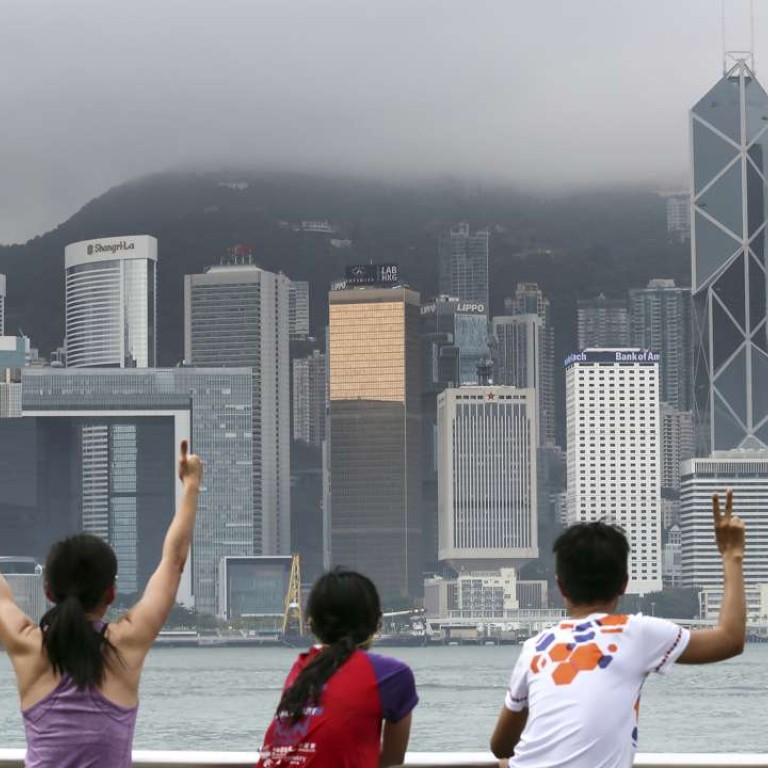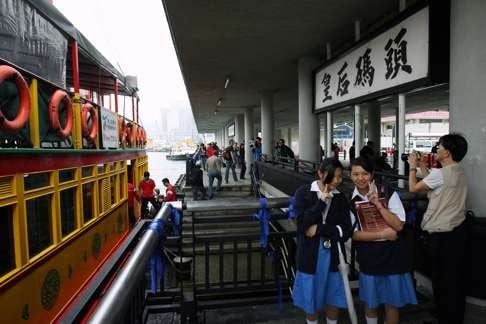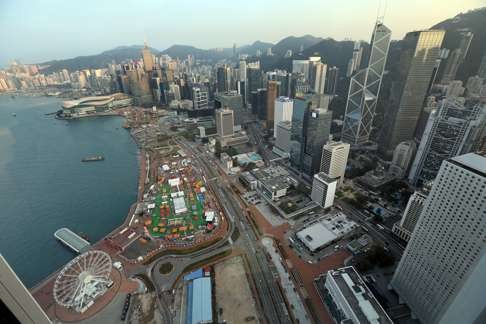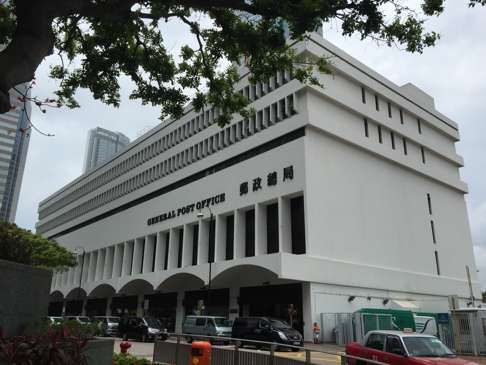
HK$12b transformation of Hong Kong’s Central waterfront: what’s about to happen
Grand plans for the Central harbourfront revamp are being overshadowed by the controversial issue of where to rebuild Queen’s Pier
Fresh debate over where to rebuild Queen’s Pier, the architecturally mundane feature whose removal from its historic site on Hong Kong’s Victoria Harbour ignited fierce protests, has deflected attention from a HK$12 billion plan to transform one of the world’s great waterfronts.
It’s a plan that’s about to take off despite continuing doubt about its merits.

Queen’s Pier rebuilding plans anger protesters who fought its demolition
There will be upmarket office space in the form of four low-rise grade A office buildings to go up where the General Post Office stands (the new GPO will be in Kowloon) and along the walkway to the Star Ferry. An office block and a large hotel are also planned for the reclaimed area in front of Citic Tower in Admiralty. In total, 200 000 square metres of floor area will be created, according to Secretary for Development Paul Chan Mo-po.
Push to scrap Hong Kong City Hall car park amid harbourfront development
A large deck will be built from the first floor of the IFC Mall all the way to Piers 4 to 6, where ferries leave for Lamma, Cheung Chau and Lantau. Three buildings no taller than 50 metres, including one grandly marked as an “Iconic Building”, will provide a mix of retail, food and beverage and community venues on the deck, with the rest being open space with access to the ferry piers. An extra floor will be built on top of the three piers for shops, restaurants or viewing platforms.

Then there is the Queen’s Pier, the reinstallation of the old Star Ferry clock tower in front of City Hall, and landscaping of the open space between the Star Ferry pier and Tamar Park. A decision also needs making about the long-term prospects for the Ferris wheel on the waterfront. The contract for operation of the Observation Wheel expires in mid-2017.
None of the design details has been decided. Nicholas Brooke, chairman of the Harbourfront Commission, says the government wants to get the ball rolling by elevating the commission to a statutory body that will oversee the whole project.

The new body, to be called the Harbourfront Authority, could have its own by-laws and, hence, the freedom to create a user-friendly environment. If there isn’t too much delay in getting Legislative Council approval, Brooke hopes the authority can be set up by the middle of 2017.
“It will make a difference to have an authority that has executive power. Right now the commission is advisory. We are keen to move from ‘can’t do’ to ‘can do’. The Leisure and Cultural Services Department, which runs all the parks, is hamstrung by rules and regulations. At the moment you can’t walk your dogs, you can’t sit on the grass, you can’t ride your bikes, and so on,” he says.

Brooke also hopes an authority could grant a longer contract to the future operator of the 3.6 hectares of event space that’s already a major venue for concerts, fairgrounds, art and food fairs.
“Because the government anticipates handing over to the authority, everything they’ve done is temporary. At the moment the events space is managed under a three-year outsourced contract. It doesn’t encourage investment,” he says.
The overall plan was published in 2011 after years of public consultation.
Professor Ng Mee-kam, director of the urban studies programme at the Chinese University, says the government should be given credit for listening to different views. “For example, they have made the new buildings lower. There was a plan to have a so-called groundscraper along where the Star Ferry walkway is now. It’s called that because it’s like a skyscraper lying on its side. We feared a huge, long structure like that would block the passage of air. So the government agreed to chop it up into four smaller buildings,” Ng says.
We feared a huge, long structure like that would block the passage of air. So the government agreed to chop it up into four smaller buildings
Those four office buildings will still have the largest floor plates, or open floor space unobstructed by too many columns, in Central. “This is 1.5 million sq ft of development potential in total. The idea is to create very large floor plates of 100,000 sq ft. That’s double the area in IFC Two,” Brooke says.
The businesses that will want such big spaces are likely to be financial services firms that need large trading houses. The sites are likely to be sold by tender in 2018 or 2019 – and will probably raise more money for the Hong Kong government than any other land sale, he adds.
The buildings on the deck of IFC Mall, however, would be run by the putative Harbourfront Authority so any rental revenue would help sustain its long-term funding.
The Central Harbourfront makeover adds up to a lot of new construction, and will take five to seven years to complete once the authority is set up and office plots sold, Brooke says. However, the waterfront area is likely to be dug up again when work begins on the MTR’s delayed North Island Line.

“We raised that with the government back in 2006. We were asking why the subway construction couldn’t start now. But at that time, the government and the MTR had not agreed on the funding model [ for the line]. So now, construction probably won’t start until 2021,” says Paul Zimmerman, a co-founder of Designing Hong Kong, a non-profit group fighting for better urban planning.
Jessica Kong, who lives in Mui Wo, Lantau, and who uses the ferry to commute to work on Hong Kong Island, is not convinced the development will make her life better. “The work on the Central-Wan Chai bypass has made the area very unsightly for a very long time. The future harbourfront development means that we are going to have a huge construction site here indefinitely,” Kong says.
“I am also very sad to see the General Post Office go. It is part of a very attractive cluster of low-rise buildings and it has historic and practical value,” she adds.
The harbour, to me , is the ‘jewel in the crown’ for Hong Kong and transcends the past, the present and the future. Hence, it is important to treat this endowment with care
A spokesman for Hong Kong and Kowloon Ferry, which operates services to Lamma Island from Pier 4, says there has been no decision about who will manage the retail space being added to each pier.
“We have no experience. We won’t know what to do,” she says. “The current retail environment is not encouraging either. We don’t know if all that new space will attract tenants. The shops at the Star Ferry pier are not doing very well.”

The government will have to make sure the new structures are well designed, says Martin Fung, an architect and urban design activist. The existing bus terminal in front of the IFC Mall will be covered by the new deck, and he hopes it will not become the a dark, fume-choked terminal like those elsewhere in Hong Kong.
Brooke hopes that the Harbourfront Commission, or authority, will encourage the government to consider the integrated look of the development rather than cost.
“The harbour, to me , is the ‘jewel in the crown’ for Hong Kong and transcends the past, the present and the future. Hence, it is important to treat this endowment with care,” he says.

